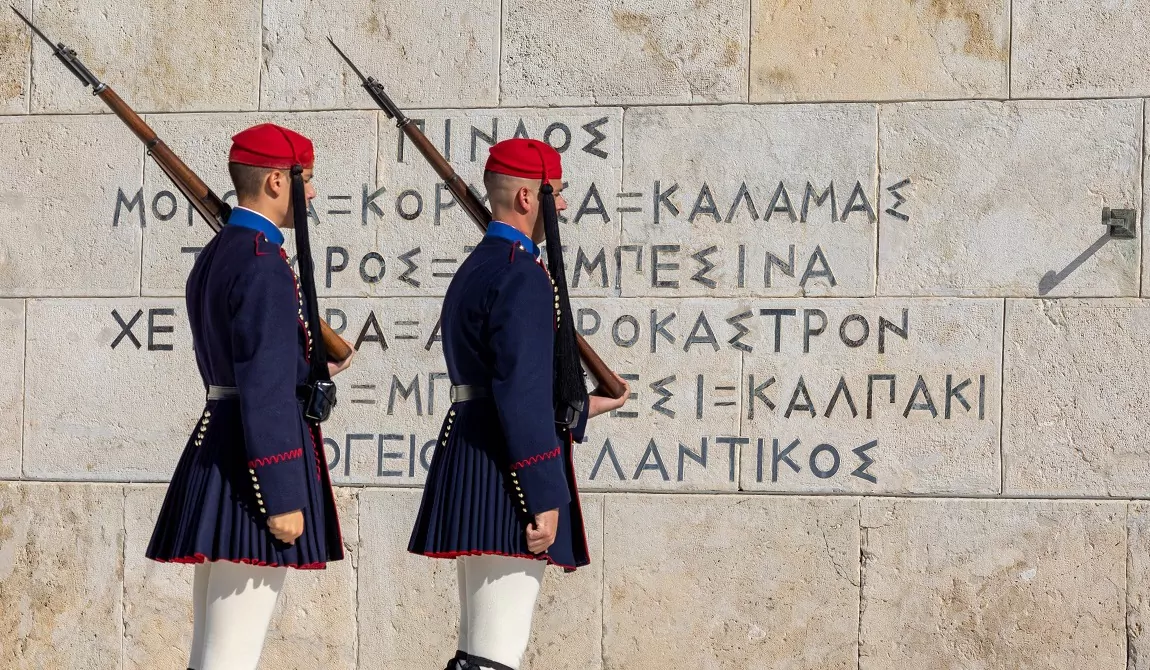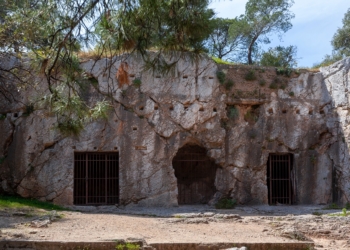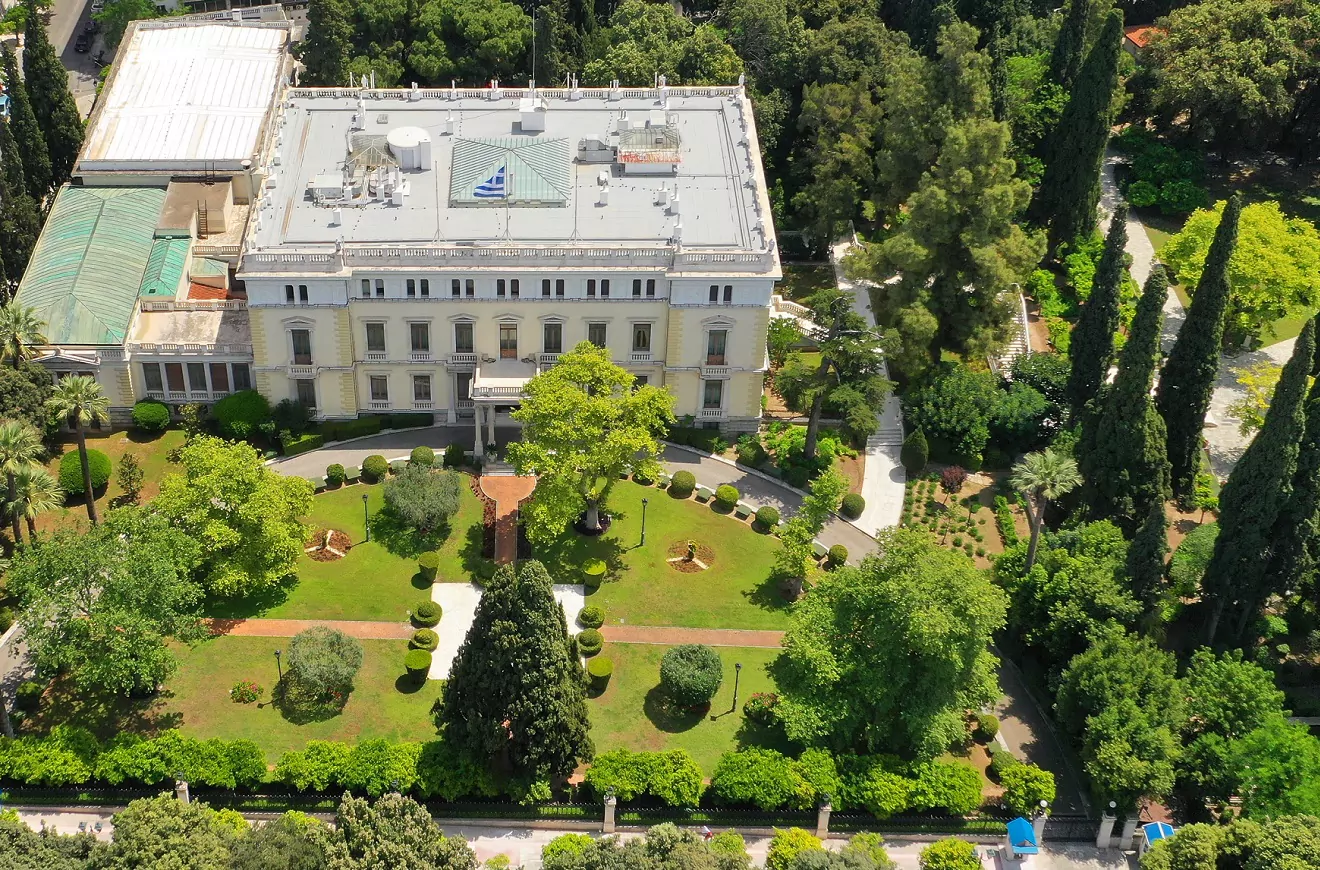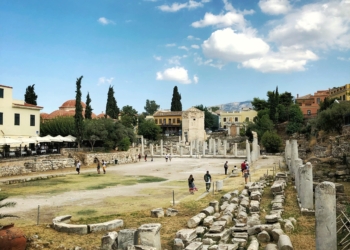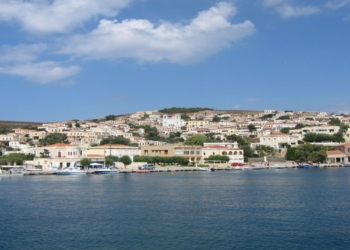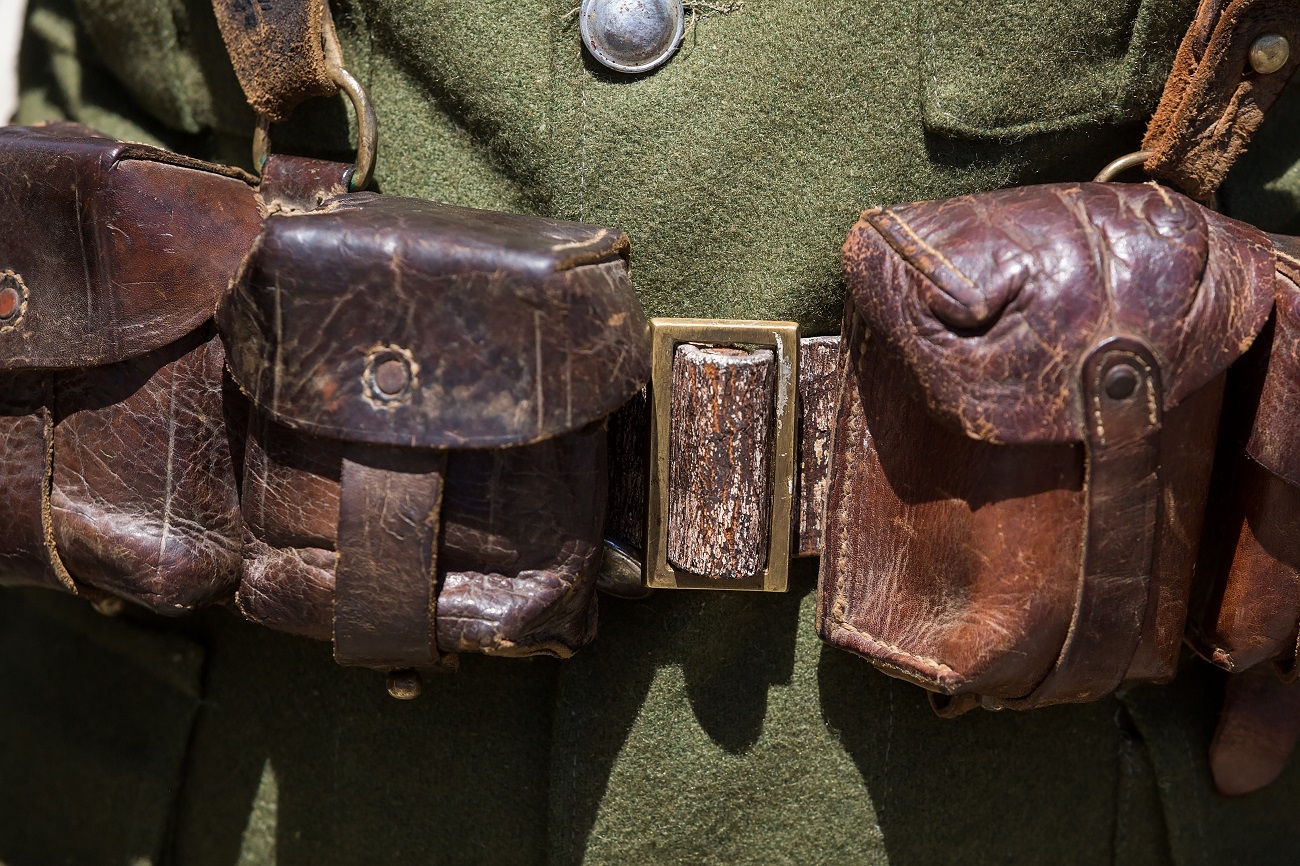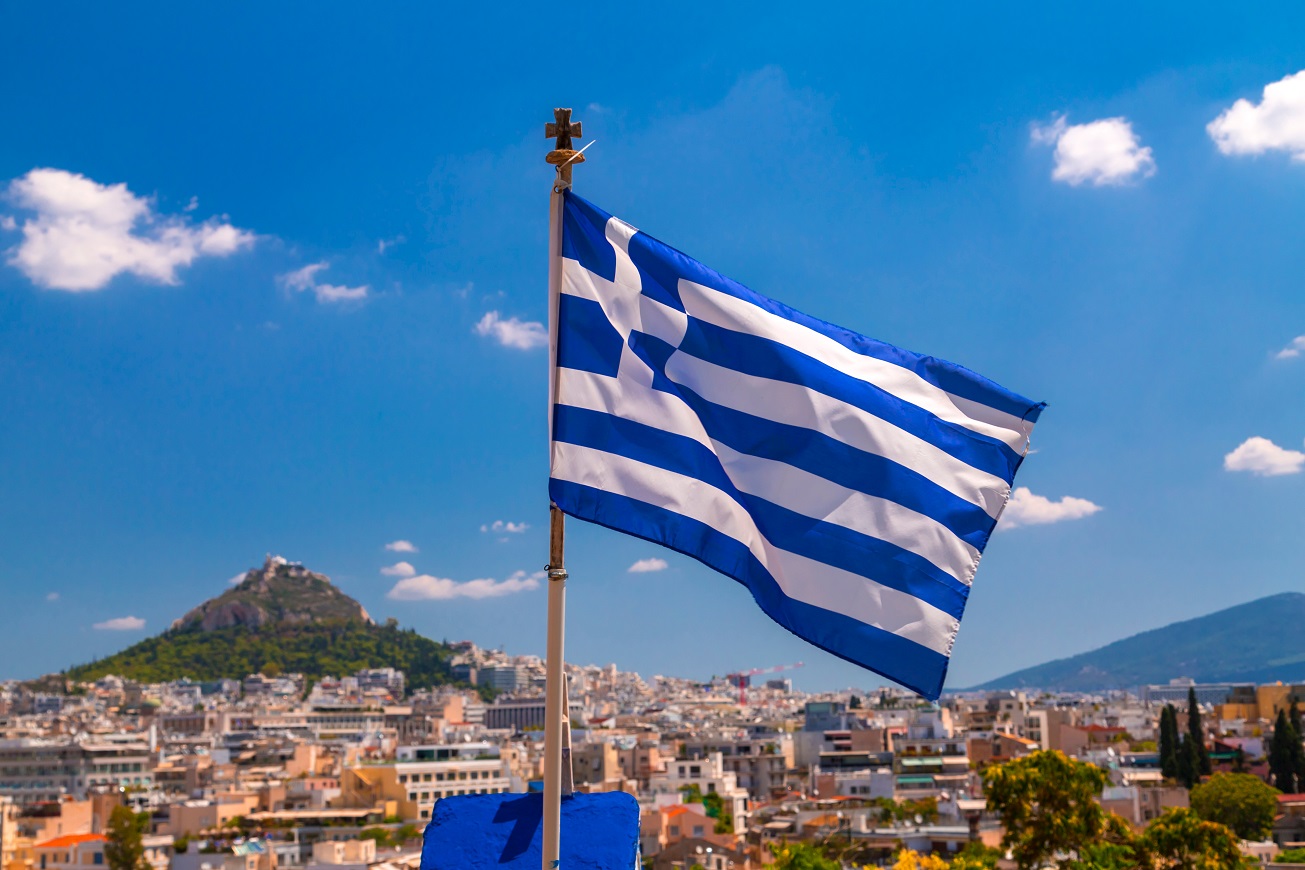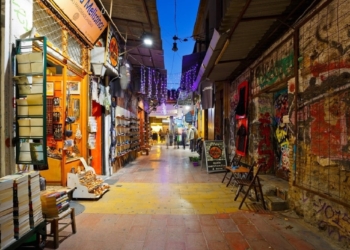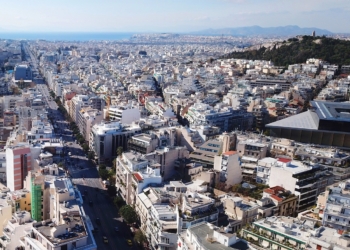The Monument of the Unknown Soldier, situated in front of the Greek Parliament, is one of Athens’ most significant and enigmatic landmarks. Its mystery lies not in the identity of the soldier, but in the seemingly random arrangement of names etched into the stone. Many visitors are left puzzled by the lack of apparent order or consistency. However, the explanation is often simpler than one might think, saving the effort of racking one’s brain for an answer.
Greek flag: Why is it blue and white, with nine stripes?
The Monument of the Unknown Soldier
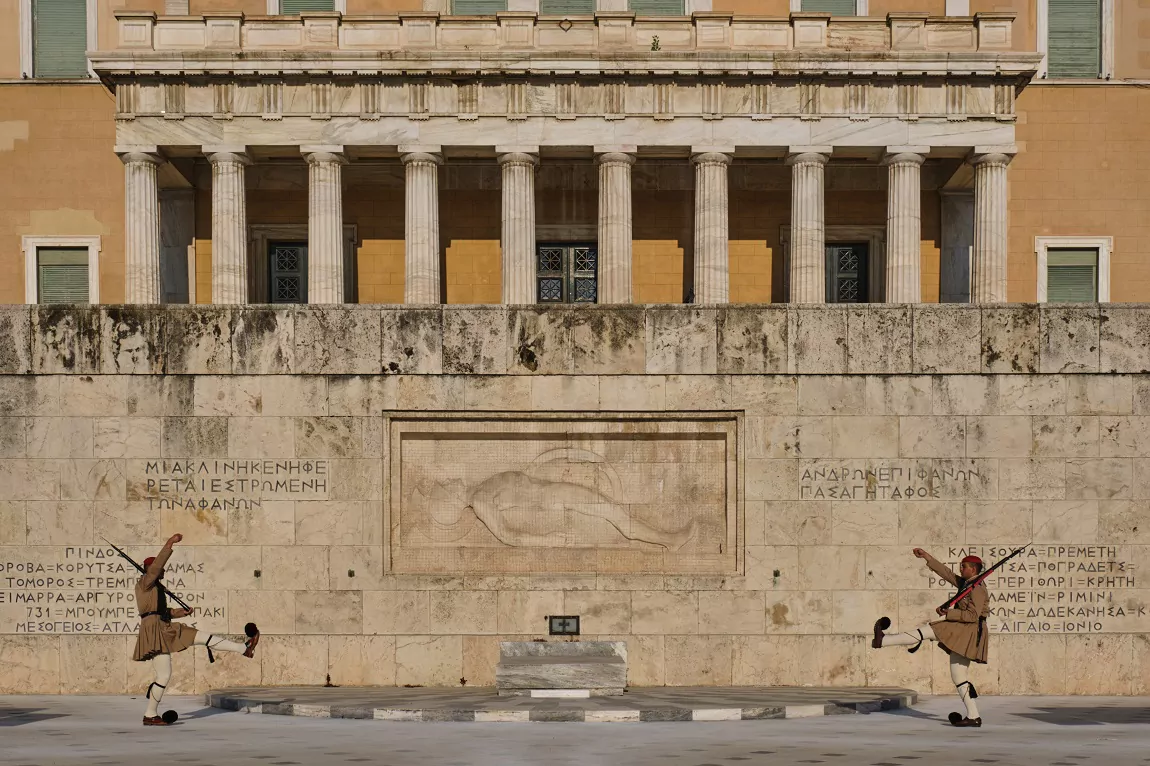
Everyone who resides in Athens or has visited the city has likely witnessed the changing of the guard at the Monument of the Unknown Soldier. This ceremony, which occurs at specific times, captivates onlookers as they watch the guards, known as ‘tsolias’, remain as still as statues, regardless of the activity around them. It’s uncertain whether Theodoros Pangalos, who decided to construct this monument on March 3, 1926, during his dictatorship, could have foreseen its future significance as a tourist attraction.
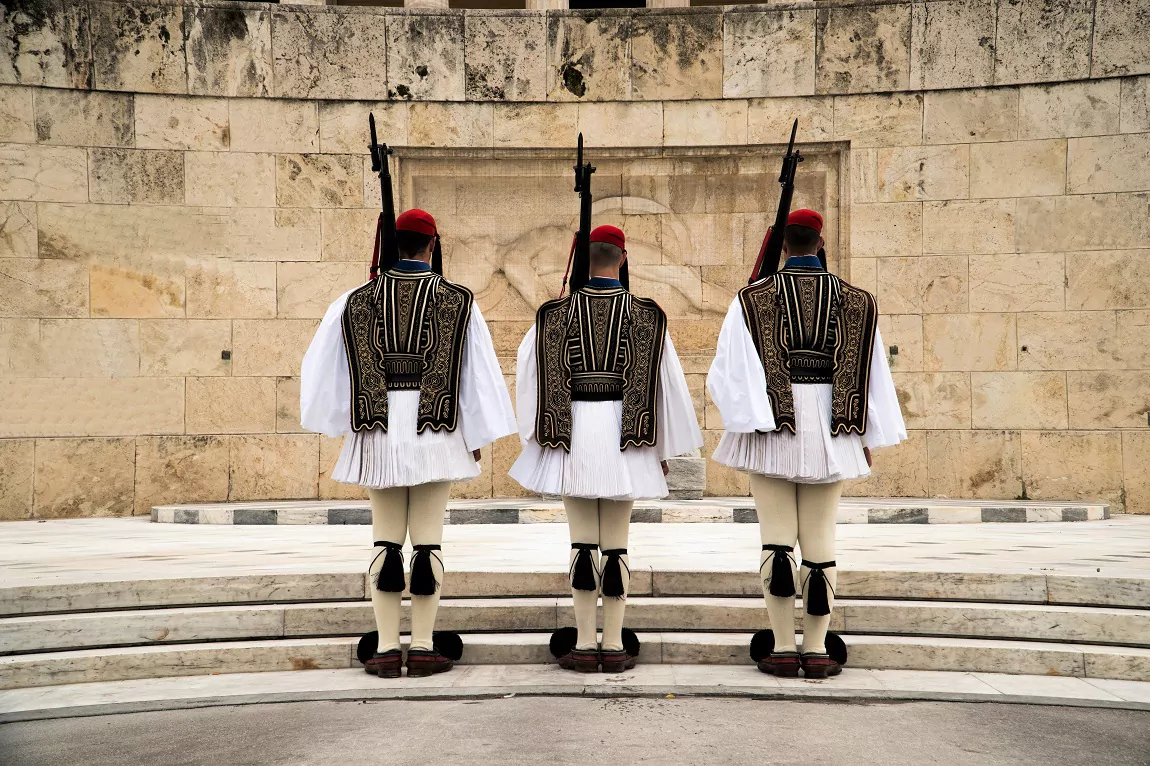
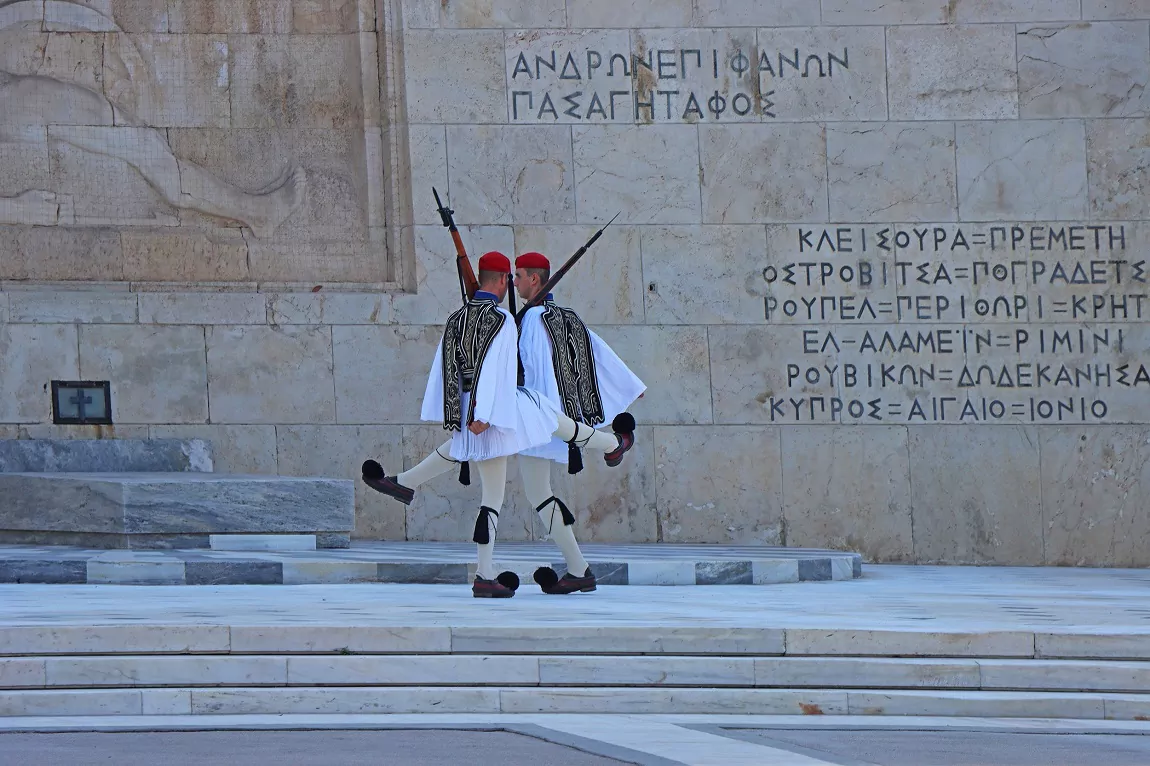
Fort Roupel: The legendary monument – a symbol of the struggle of the Greeks in the epic of the ’40s
All inscriptions on the Unknown Soldier’s Monument

LASSON=SARANTAPORON
LAZARADES=STRAITS:PORTA
S=KATERINI=SOROVIC
GIANNITSA=THES
SALONIKI=OSTRE
OVON=GIRL=
PESTA=GRIBOVO
PENTEGO
DIA=PREVEZA=
AETORRACHI=MA
NOLIASSA=BI
ZANI = DRISKOS
KILKIS=LAHAN
A=BELES=KRE
SNATSUMAYA
PETSOVO=NERVE
OKOPI=BANIT
SA=MAHOMEA
GOLOBILO=S
BORSKO=PRESS
LAP=ERIGON
RABBI=MONASTERY
SKRA=STRYMON=DOIRANI=BELE
S=GRANCORONE=GENA
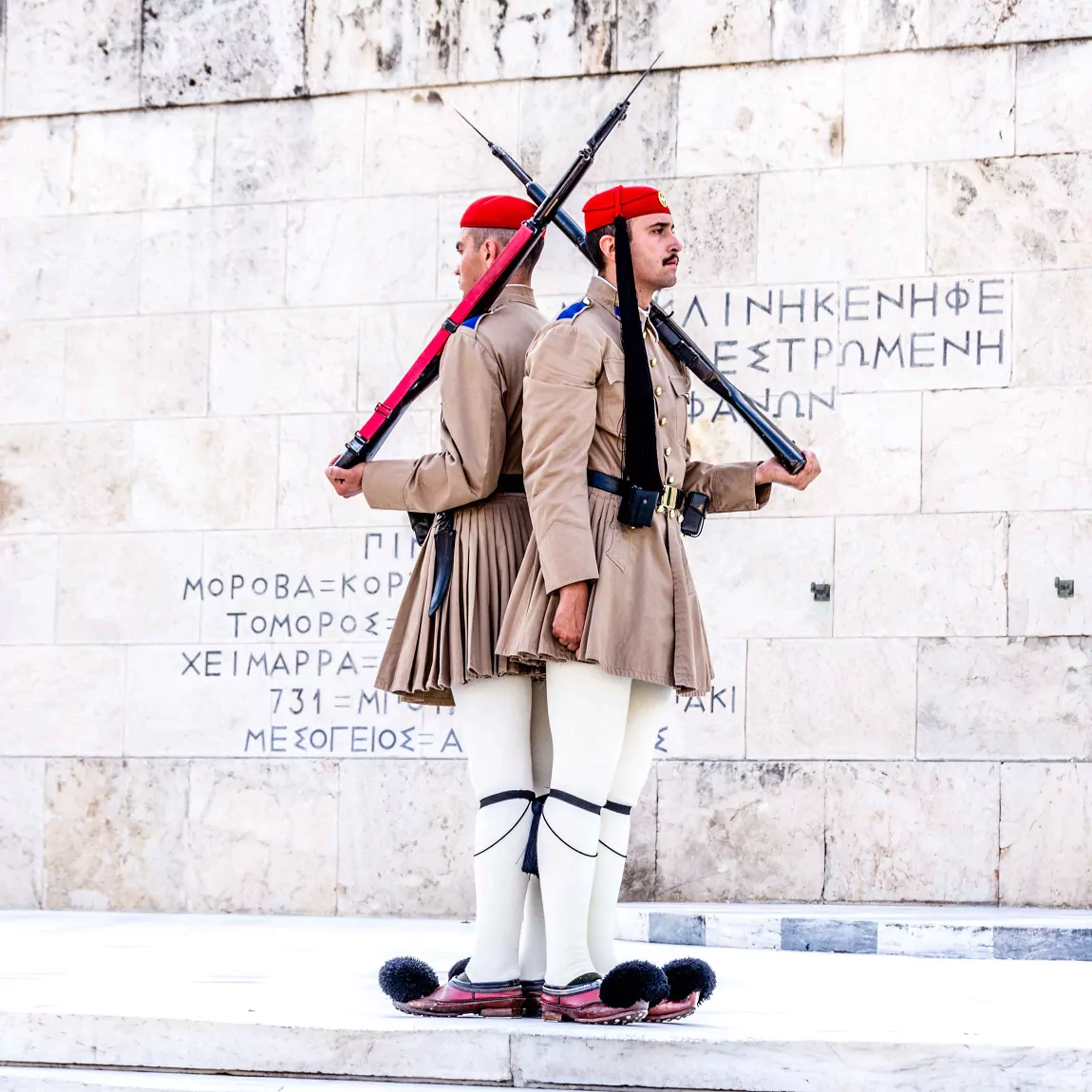
KHERSON=SERMI
KAS=ODESSA=SEBASTOPOLIS
ARTAKI=AIDIN
ION=PROUSSA=
PHILADELPHIA
TUMBUBUNA
P=KUTAHIA=D
ORILAION
AFION KARACHIS
AR=SAKARYA
KALEGKROTO
As for the names to the left and right of the hoplite, they are as follows…
PINDOS
MOROVA=KORÇË=KALAMAS
TOMOROS=TREBESINA
HIMARA=GJIROKASTRON
731=BOUBESI=KALPAKI
MEDITERRANEAN=ATLANTIC
KLEISOURA=PREMET
OSTROVICA=POGRADEC=
ROUPEL=MARGIN=CRETE=EL-ALAMEIN
RIMINI=RUBICON=DODECANESE=KOREA
CYPRUS=AEGEAN=IONIAN
Fort Lisse: The pride of the “Metaxas Defense Line” that did not fall from the Nazi forces
How the inscriptions were distributed

Following the presentation and location of the inscriptions, it’s clear that the monument is divided as such: To the left, as we face the monument, are the battles of the First and Second Balkan Wars, along with the Asia Minor Campaign.
Conversely, on the right, the battles involving Greek soldiers in the First and Second World Wars, the Russian October Revolution, and even conflicts in Korea are inscribed. Naturally, the invasion of Cyprus by Attila in 1974 is also included due to its significance, and its name was subsequently added. Additionally, a decision was made, albeit delayed, to pay appropriate tribute to the sailors who lost their lives during the Second World War.
Tomb of the Unknown Soldier: How we got to the Presidential Guard
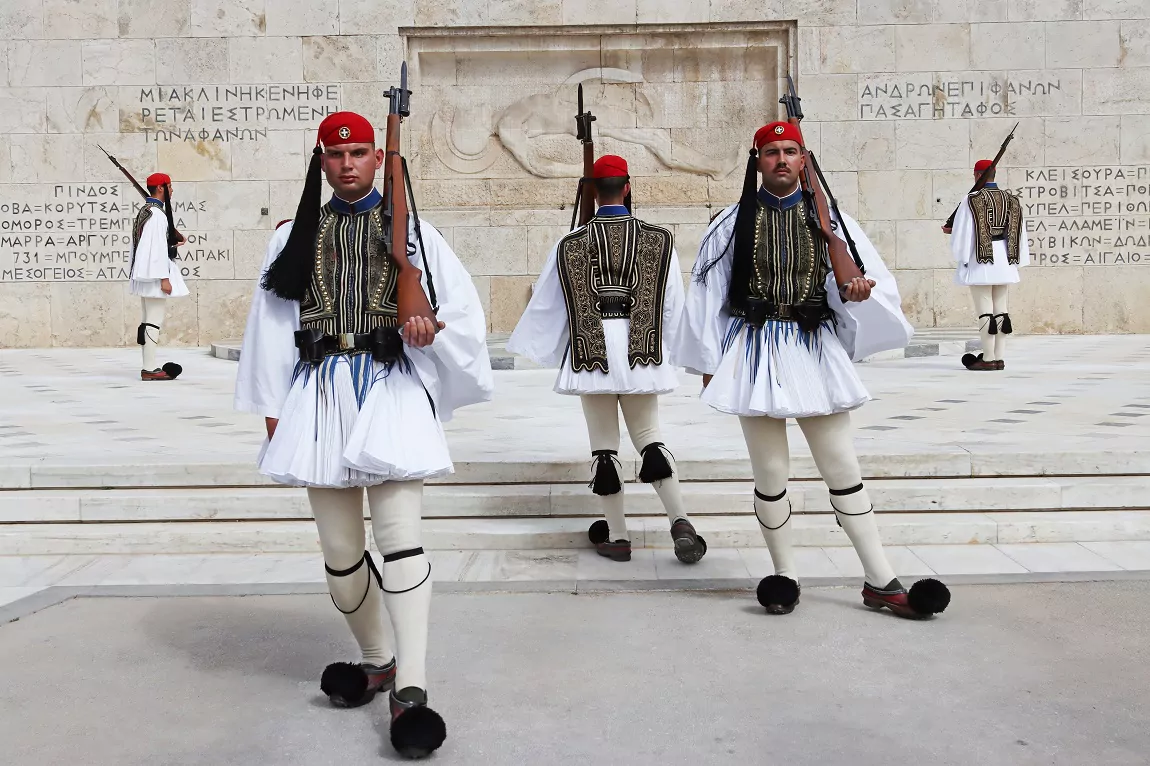
In essence, this is the history of the inscriptions on the Unknown Soldier’s monument. Since its unveiling on March 25, 1932, it has had its own garrison, initially made up of a special military Unit from the Guard of the President of the Republic. This Unit was designated as the Guard of the Tomb of the Unknown Soldier and was later renamed the Royal Guard in 1935, following the return of George II.
However, in 1974, due to significant political and military changes, the name was once again altered to the Presidential Guard, as it is known today. Those unfamiliar with it learn about it when they choose to stand in front of the monument, waiting to see if the guard will remain statue-like or not.
Ταξίδια στην Ελλάδα
Varvakeios Agora: A story that counts 136 years – The proposal for demolition
Minion: What does the name of the department store mean and how it all started?


